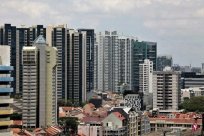The high and low macro tax burden belong to the overall judgment. The needs of each country's government expenditure is different, and the operating conditions of enterprises in each country are also different.The state's macro tax standards to judge China's tax burden standards.
According to the Beijing News, Xu Shanda also analyzed why some companies did not realize the taxes of the actual experience from the actual tax rates of SMEs, rising prices of basic products, and reserved taxes and refund taxes.The reason for the decline.
Xu Shanda judged that China's macro tax burden will be in a stable state in the short term.In his opinion, the decision -making level has realized that the macro tax burden is an important issue in China's fiscal and taxation strategy.However, the judgment of the decision -making layer on the macro tax burden needs to make a general judgment based on the state's income expenditure, the business conditions of the enterprise, the source of the tax, and the government expenditure, and it takes time to make this judgment.Therefore, Xu Shanda believes that the stable macro tax burden is a short -term work. During this time, it is stabilized. After making a judgment, and then making the final decision, Xu Shanda said.
Since China's macro tax burden will be stable in the short term, why is the actual feeling of the company different from this? Xu Shanda claims that this is the following three reasons.First of all, for small and medium -sized enterprises, the tax burden has increased.Because under the system of business tax, small and medium -sized enterprises often do not invoiced or provide services, and it does not matter if the enterprise accepting services.However, after the battalion reform (business tax reform), the enterprise accepting the service needs the service party to provide VAT tickets for reimbursement.Therefore, after the increasing business reform, the collection rate of value -added tax is actually higher than the business tax (levy rate), which leads to an increase in the burden of SMEs provided by services. This is an increase in the actual tax burden caused by changes in tax systems.
Secondly, the rise in basic commodities has led to an increase in tax burden in the field of investment products.At the end of 2015, China implemented supply -side reforms. By 2017, the production capacity work achieved significant results.The prices of some basic products have begun to rise, such as coal, steel, etc. The tax capacity in these areas is relatively large, so the rise in the price of these commodities has led to a large increase in tax burden.In addition, the rise in the price of basic goods has not been fully deferred to the consumption link, and the increase in the price of consumer goods is not high, but the increase in investment products is relatively high.In the field of investment products, China has levied a lot. Therefore, this part of taxation has grown rapidly, and the actual feelings of enterprises have increased the tax burden.
Finally, there is a problem with history left to the tax.China established a value -added tax in 1994, mainly to learn the European VAT system. Europe is accounting once a month. If the enterprise sells taxes more than the tax they want to pay, then the enterprise needs to pay taxes to the government; if the enterprise is enterprise; if the enterpriseThe tax to be paid is less than the tax to pay, so the government tax refund.However, considering that in 1994, the Chinese government tax was less taxed, so the tax design that should be refunded to the enterprise was designed as retained taxes, and when the enterprise was sold in the future, it would be offset.
After the business reform increase, including the purchase of equipment, the factory building, all purchase behaviors, and the purchase of financing behaviors, they have been recorded as reserved taxes.increased.For those companies that have just invested and have not produced, this part of the tax delegation is more pressured on the enterprise because there are only purchasing items and no sales items.Like some high -tech industries, there may be sales items for more than three years. In this way, the investment cost of buying equipment and the tax costs generated by financing behaviors are recorded as reserved taxes.offset.
Xu Shanda said that relevant national departments also made adjustments for this.During the two sessions of March 2018, the State Council made a decision to take out more than 110 billion yuan, and change the retained tax tax on the history of each place to the tax refund to the enterprise.However, Xu Shanda said that now it seems that the number of taxes for enterprises is still there. This part has not been completely resolved. Xu Shanda's judgment of the tax ongoing tax will be slowly digested within 5 to 10 years.


